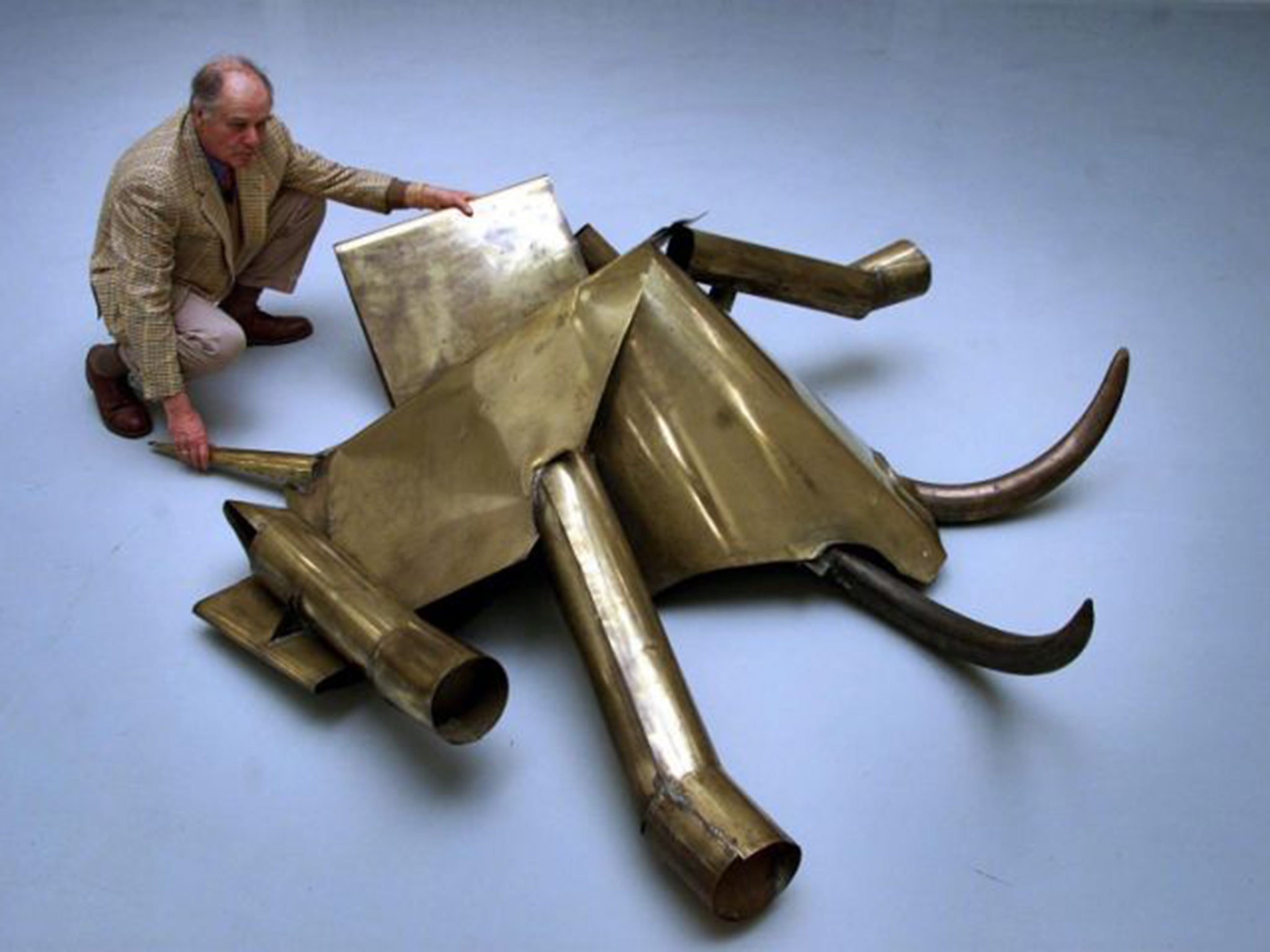Carel Visser: Sculptor hailed as a master of minimalism who turned metal and concrete into elegant and powerful forms
Visser's work first came to the attention of British art lovers in 1978 through a show at the Whitechapel Gallery

Your support helps us to tell the story
From reproductive rights to climate change to Big Tech, The Independent is on the ground when the story is developing. Whether it's investigating the financials of Elon Musk's pro-Trump PAC or producing our latest documentary, 'The A Word', which shines a light on the American women fighting for reproductive rights, we know how important it is to parse out the facts from the messaging.
At such a critical moment in US history, we need reporters on the ground. Your donation allows us to keep sending journalists to speak to both sides of the story.
The Independent is trusted by Americans across the entire political spectrum. And unlike many other quality news outlets, we choose not to lock Americans out of our reporting and analysis with paywalls. We believe quality journalism should be available to everyone, paid for by those who can afford it.
Your support makes all the difference.Carel Visser was an artist best known for his sculpture, a master of minimalism who could turn plain steel sheets and blocks of metal or concrete into powerful and beautiful shapes of great elegance. The leading Dutch sculptor of his generation, his work first came to the attention of British art lovers in 1978 through a show at the Whitechapel Gallery.
Visser was born in 1928 in Papendrecht in the Netherlands. He studied architecture at the University of Delft and sculpture at the Royal Academy of Fine Arts in The Hague, graduating in 1951. A great Anglophile, he had first visited London just after graduation, taking particular interest in historic statues and sculpture at the British Museum. His debut one-man show was held at the Kunsthandel Martinet in Amsterdam in 1954.
During the mid-1950s he visited the studios of the sculptors Brancusi and Giacometti, whose works influenced his early creations. These figurative sculptures, human forms made of iron, or animal and plant motifs, gave way to the geometric abstractions in space, which are his forte. Nicholas Serota noted how "his welded steel sculptures could be compared with the work of David Smith in America or William Turnbull in England."
A major break came in 1960, when at 32 he was offered an exhibition at the Stedelijk Museum, Amsterdam, an important venue for contemporary art then, as now. That show brought him recognition in his home country. He represented the Netherlands at the Venice Biennale and at the Documenta in Kassel in 1968, adding international renown.
Nicholas Serota (now Sir Nicholas) organised an exhibition at London's Whitechapel Gallery in 1978. "The show at the Whitechapel was a revelation to many", Serota told The Independent. "In the post war period he had developed a distinctive form of minimal abstraction based on the study of nature... In the '70s his work took an unexpected turn, incorporating found natural materials in assemblages. Many of his supporters were shocked, but the show at the Whitechapel, covering the full career was exciting for younger sculptors who welcomed his fresh, 'post modern' freedom of expression."
The show travelled on to the Arnolfini Gallery, Bristol and the Third Eye Centre, Glasgow. Clive Adams, who curated the exhibition, commented, "I think he's a very underrated artist because he wasn't a great egoist and wasn't always socialising and publicising his art work." Visser had latterly retired to the village of Le Fousseret, near Toulouse.
A retrospective, Carel Visser – Counterbalance, opened at the Mayor Gallery in London last month. James Mayor, the gallery's director, told The Independent, "I remember after seeing the Whitechapel show in 1978 being amazed by the strength of Visser's work, and when the opportunity came a couple of years ago to be able to work with him I jumped at it. I am only sorry that he couldn't see it for himself, but I know that he was very happy with the catalogue and died happy in the knowledge that his show in London had become a reality."
MARCUS WILLIAMSON
Carel Visser, artist: born Papendrecht, Netherlands 3 May 1928; died Le Fousseret, France 1 March 2015.
Join our commenting forum
Join thought-provoking conversations, follow other Independent readers and see their replies
Comments